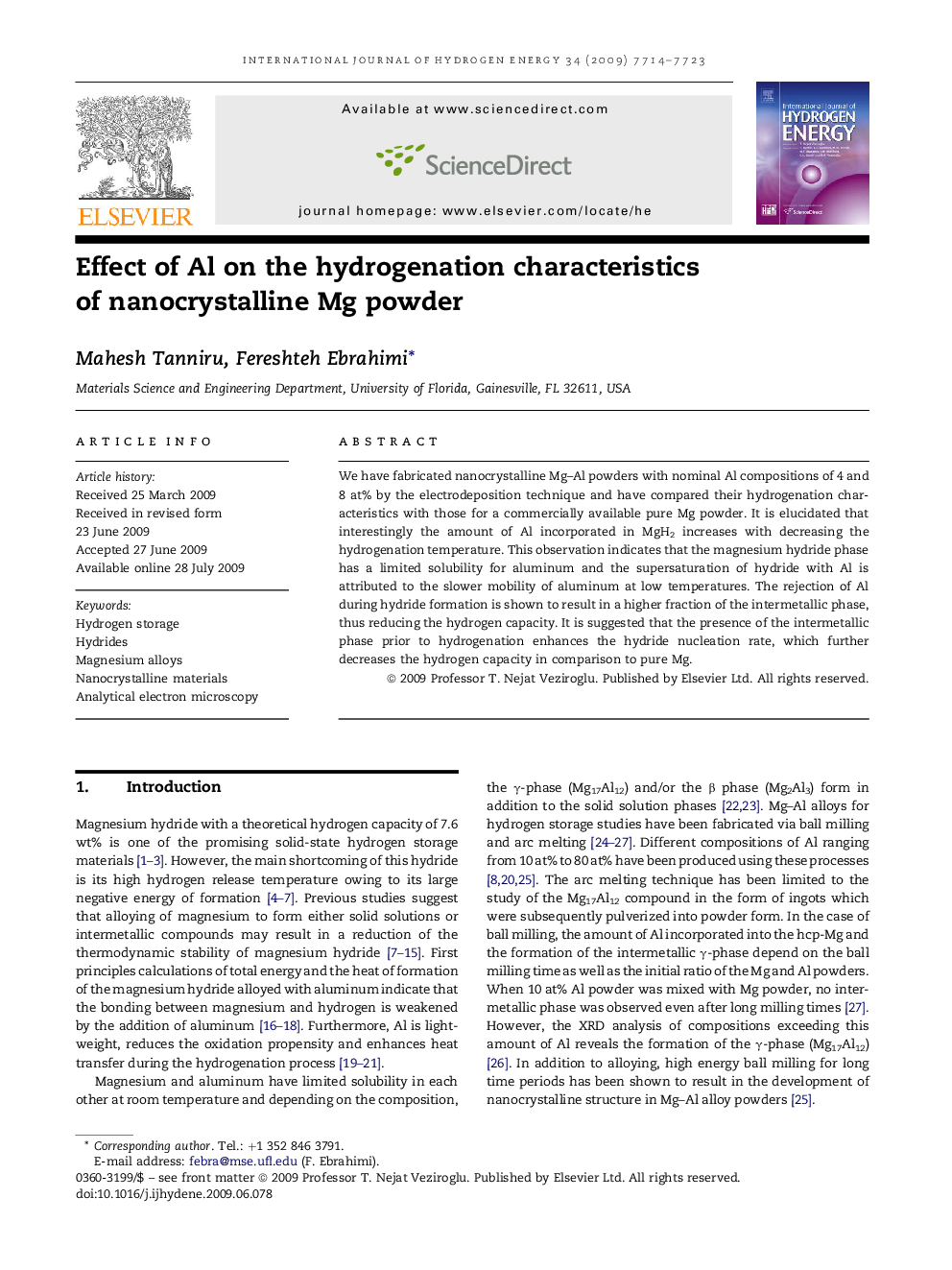| Article ID | Journal | Published Year | Pages | File Type |
|---|---|---|---|---|
| 1277414 | International Journal of Hydrogen Energy | 2009 | 10 Pages |
We have fabricated nanocrystalline Mg–Al powders with nominal Al compositions of 4 and 8 at% by the electrodeposition technique and have compared their hydrogenation characteristics with those for a commercially available pure Mg powder. It is elucidated that interestingly the amount of Al incorporated in MgH2 increases with decreasing the hydrogenation temperature. This observation indicates that the magnesium hydride phase has a limited solubility for aluminum and the supersaturation of hydride with Al is attributed to the slower mobility of aluminum at low temperatures. The rejection of Al during hydride formation is shown to result in a higher fraction of the intermetallic phase, thus reducing the hydrogen capacity. It is suggested that the presence of the intermetallic phase prior to hydrogenation enhances the hydride nucleation rate, which further decreases the hydrogen capacity in comparison to pure Mg.
